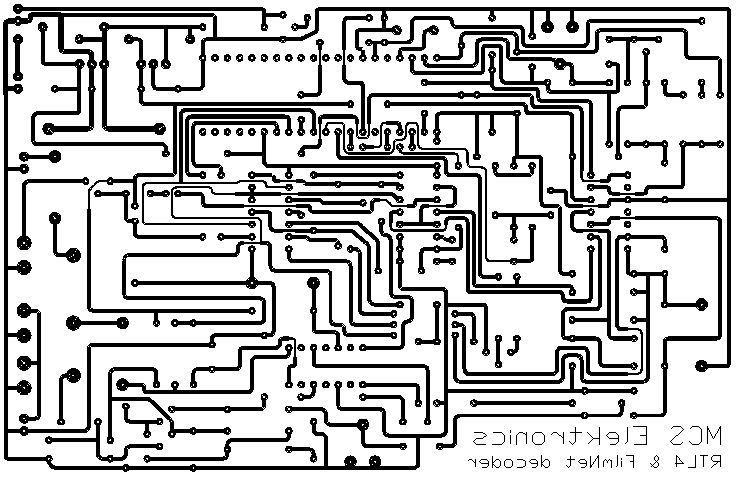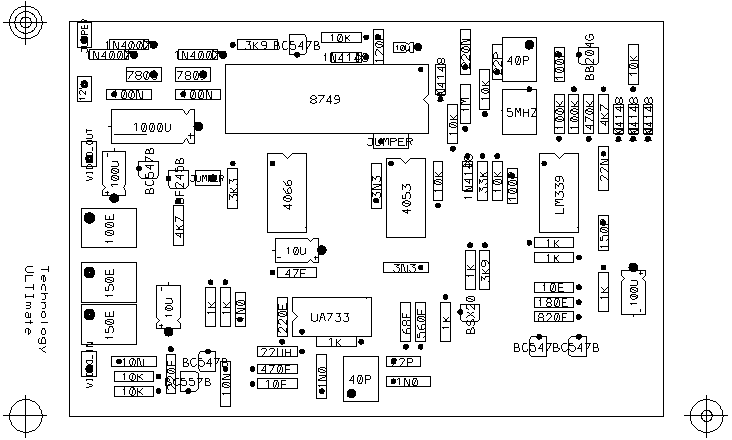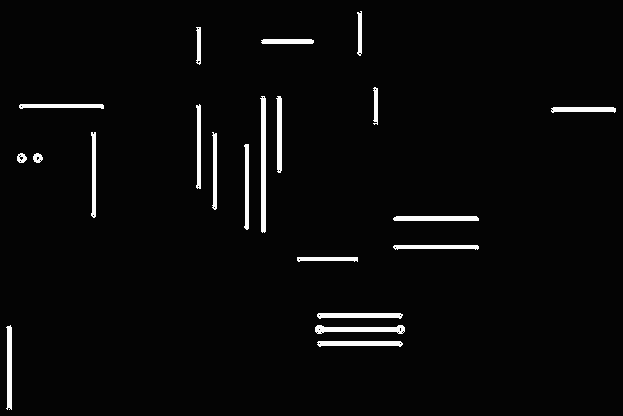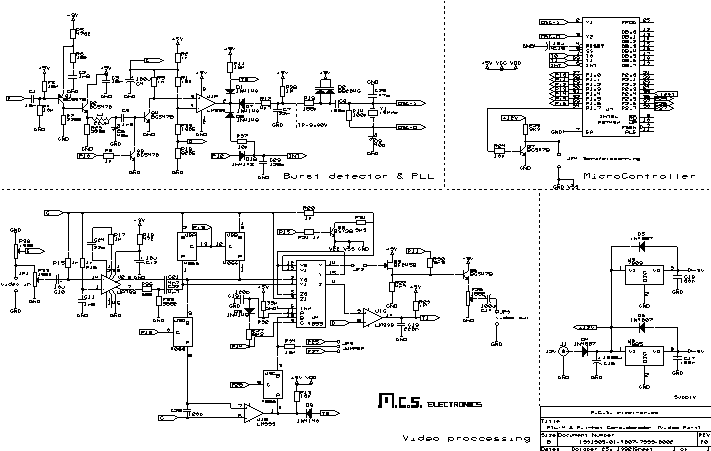

Originally it was developed for connecting to a satellite receiver, but it works well on a cable receiver! but here in holland RTL4 is unscrambled on the cable. The adjustment. This is very simple. Start with connecting pin 35 of U7 (8749) to ground. turn R39 and R26 halfway, and R38 to gnd, and C9 and C6 to half. apply a normal videosignal to the input (ie unscrambled) and connect the output to a monitor/modulator or TV/receiver input or a ossiloscope. apply 12V to the supply input (J1). Now a picture will appear, rolling over the screen. turn C9 till the picture slowly scrols to the left, about 1 roll per 2 seconds. now turn R38 till the picture stops, and turn C6 to the middle of the 2 ends where the picture begins to scroll. try to turn R38 a bit back to ground if the hold-region is to big. Now apply a encoded signal, ie FilmNet or RTL4, and turn R39 till the blacklevel is equal to the blanking-level, or black appears to be normal on the screen, not to black, and not to grey. finaly adjust R26 so that the contrast of the picture appears to be normal. now remove the power and the connection between pin 35 of U7 and ground. Turn R38 to ground. Turn on the power, and turn R38 slowly untill the picture appears, turn R38 a little bit further. ok, now connect a voltmeter to the junction between R12 and R13 and turn C9 till the voltage is about 3,80 Volts. Remove the voltmeter. (Note that I use a voltmeter with a Ri of 10Mohm.) Now switch to RTL4, and turn R38 so that the picture stays positive. This does NOT apply to cable or FilmNet only use. Well, for the electronics here a explanation of the adjustment points. R38 Input level to chroma detector. R39 Input level of the CVBS signal, adjust so that the blacklevel is equal to the blanking level. (scope on rastersync. R26 Output level of the decoded CVBS signal. maximum is about 2.6Vtt C6 Chroma filter resonance. adjust to 4.43 MHz. C9 VCO free-running frequency. see TP. well, success with the building of this decoder! and watch for the ATNDOC's! ---- List of Components ---- *** Capacitors *** C11,C25 = 22P CRM C6,C9 = 4-40P TRIMMER C8,C16 = 100P CRM C24 = 120P CRM C17 = 150P CRM C2,C5,C12 = 1N0 MKM C14,C15 = 3N3 MKM C1,C3 = 10N MKM C7 = 22N MKM C22,C23 = 100N MKM C18 = 220N MKM C10,C13,C20 = 10U ELKO C4,C19 = 100U ELKO C21 = 1000U ELKO *** Diodes *** D1,D2,D4,D8,D9,D10 = 1N4148 D3 = BB204G D5,D6,D7 = 1N4007 *** Diversen *** J1 = 12V JP1 = VIDEO_IN JP2 = JUMPER JP3 = VIDEO_OUT JP4 = JUMPER JP5 = JUMPER L1 = 22UH X1 = 15MHZ *** Halfgeleiders *** Q1 = BC557B Q2,Q3,Q4,Q6,Q7 = BC547B Q5 = BF245B Q8 = BSX20 U1 = LM339 U2 = UA733 U3 = 4066 U4 = 4053 U5 = 8749HC




After you print yourself the circuit boards you're almost done.
Now just program the 8749(8749HC)